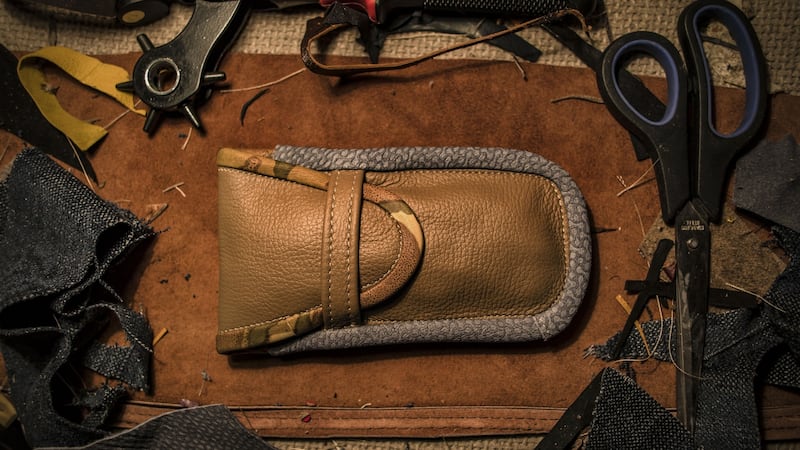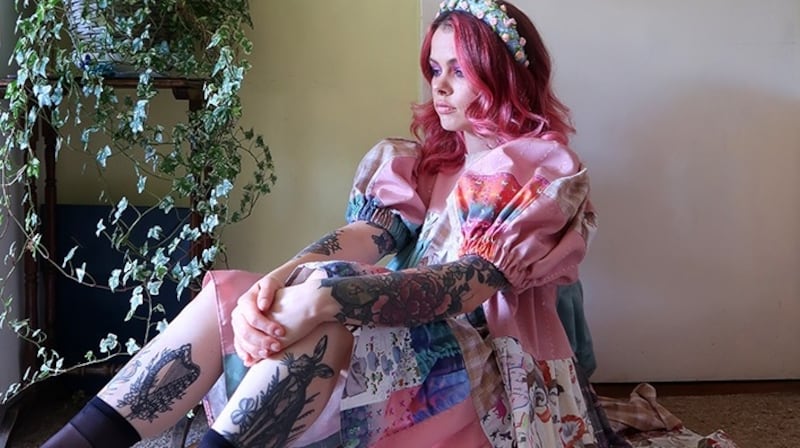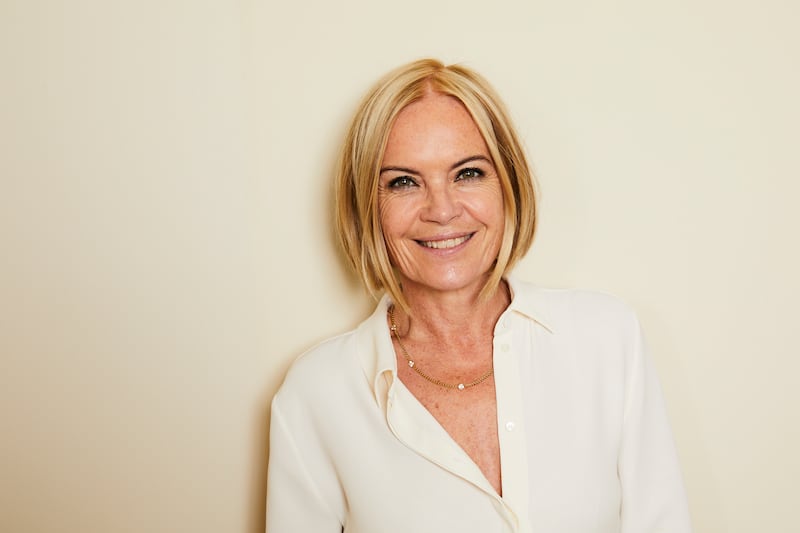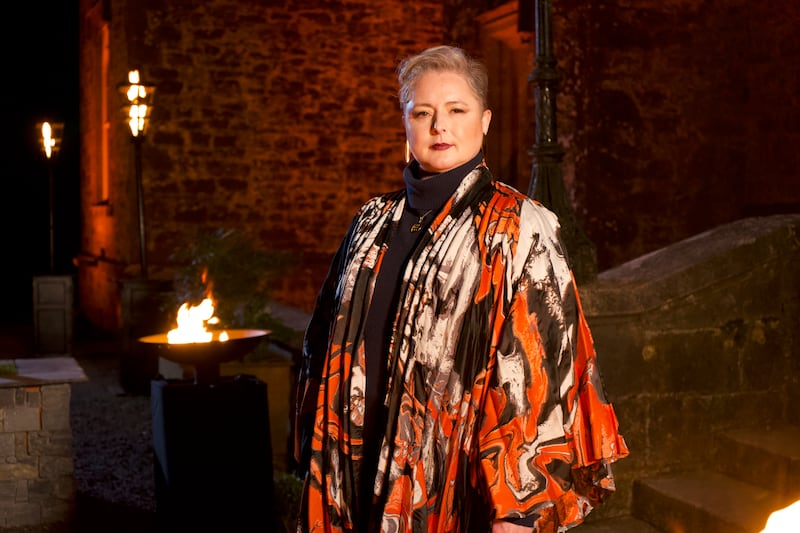The past year has taught us many things, including how important it is for us to be as self-sufficient and environmentally friendly as possible.
Throughout 2020, there was a concerted effort to shop local and keep our small towns and villages alive as well as supporting craftspeople and artisan producers. But there is another cohort of people who are making beautiful and useful products, with an added bonus – they are all from recycled materials.
Musician and song writer Niall Toner was at a loss last March when the lockdown happened, as he could no longer perform. But rather than sitting on his laurels, he reignited a previous skill and started making things out of recycled leather.
"I had been a leather tailor for almost 20 years and still have my old sewing machine," says Niall, who also previously worked as an RTÉ radio presenter. "So I started making guitar straps, shoulder bags, belts and a variety of other items earlier this year.
"I work from home, in the foothills of the Blackstairs Mountains in Carlow, and I have been selling my Toner Craft Leather on Facebook (facebook.com/NiallToner91) and craft sites and, so far, it has been going well."

Sallyann Marron from Miltown Malbay in Clare also makes handbags, along with backpacks and neckbands from fabric she designs herself and with wildflowers she collects from her locality.
“Each morning I walk with our dog, Poppy, and take pictures of flowers along the route,” says Sallyann. “I decide my favourite pictures and whittle them down to form the basis of my new designs and then produce in different colourways and get them printed on a water-repellent fabric and a super soft stretch fabric, and then line with recycled denim jeans which I get from charity shops.
“The linings all have to be washed, dried and pressed before they can be used and then ‘filleted’ for zips and belt loops. I try to reuse as much of the jeans as I possibly can, so the zips are used to make little coin purses and the belt loops to hold a key clip which I sew into every bag that I make. Offcuts of the jeans are used to make the linings for the inside zip pockets that customers can order if they are customising their handbag or backpack.”
The designer, who runs sallyannnsbags.com, makes all the creations herself to ensure the integrity of her designs and says not only are her bags sustainable and ethical, but they are also a really nice product.
“I didn’t want to be responsible for adding to the horror of ‘fast fashion’ and on finding out that using recycled cotton saves 20,000 litres of water per kg of cotton, I realised that I needed to use recycled fabric,” she says. “So, not only did I help charity shops with an outlet for all the jeans they struggle to sell, but I also found a strong, rip-resistant lining for my handbags, in a fabric which goes with everything.
“I used recycled products from the beginning because I have always tried to be aware of my impact on the environment. And the publicity surrounding the conditions of garment workers in developing countries made me want to move towards the concept of ‘slow fashion’ and making something which will last.”

Consumers are now more aware than ever of the ethical and environmental impacts of their purchases and this has led to a demand for products which offer sustainable solutions
Fashion designer Aisling Duffy agrees and says the shift towards environmentally friendly fashion has been building for many years.
"There has been a huge increase in both the interest and awareness of sustainable living and recycled clothing in the past few years," says the Dublin-based businesswoman. "I believe this slow cultural shift is a culmination of many factors including the formation of Fashion Revolution in 2013, which calls for more transparency in the industry, the launch of the SDGS [sustainable development goals] by the United Nations in 2015, and the rise of environmental groups and activists in 2018 like Fridays For Future, Extinction Rebellion and Greta Thunberg.
"Consumers are now more aware than ever of the ethical and environmental impacts of their purchases and this has led to a demand for products which offer sustainable solutions with the same, or better, quality than less eco-friendly counterparts. The rise of social media apps like Depop [a popular clothing reselling app], YouTube and TikTok has changed how younger generations shop and consume clothing, with many preferring to show off vintage or charity shop finds over fast fashion hauls."
Niall Toner also believes more people are gravitating towards recycled and repurposed products.
“This is probably to do with sustainability and people are becoming aware of the waste in the oceans,” he says. “There is even acceptance among vegetarians and vegans about the use of old leather as it is seen as a material which was processed a long time ago, so it isn’t contributing to animal exploitation.”
Katie Sloane has also found a public appetite for recycling. The Cork woman started selling "previously loved" clothes online and as her business grew, so too did her desire to learn how to upcycle items of clothing in order to try to use them again.
My aim was to prevent any material at all from going to landfill so we then had the idea of making miniskirts and scrunchies from the leftover fabric
"I set up peachvintageclothing.com in 2018 when, having worked in corporate sales for years, I found myself always having to have the latest trends to attend events," she says. "So I came up with the idea of selling clothes on social media, whether new with tags on, vintage or pre-loved, just as long as it had belonged to someone else and needed a new home.
“It started to take off very quickly as I would sell the clothes and split the profits with the owners. Then 12 months ago, I asked my mam [who used to be an interior designer and regularly made curtains and other items] to teach me how to sew so I could upcycle the items that didn’t sell. This ignited a passion in her and we started working together on our first project, which was taking XL men’s shirts and turning them into super-cute crop tops, which were a huge hit.
“My aim was to prevent any material at all from going to landfill so we then had the idea of making miniskirts and scrunchies from the leftover fabric.”
During the summer, Katie began embellishing old denim jackets and enrolled in a course on fashion upcycling in order to improve her skills, which, she believes, will be necessary as an increasing number of people are looking at having a more sustainable wardrobe.
“I think everyone is now aware of the effects of climate change and the need to reduce our waste,” she says. “Over the past two years, I have noticed a difference in how people shop with me; it’s not just about finding a unique item of clothing, I am increasingly hearing from people that they have taken a step back from fast fashion and the newest outfit and, instead, talk about the impact new clothes have on the planet. So I aim to learn as much as I can and be part of the change.
“It’s wonderful because, never in my wildest dreams did I think I would own my own business and be able to do something for the planet at the same time.”
Maia Mellier is also doing her bit for the world and says she loves giving all sorts of fabric a new lease of life.
“I repurpose old clothes, jeans, curtains, blankets and lots more into new and beautiful things,” she says. “I make aprons, purses, bags and artwork and I haven’t thrown any fabric out for as long as I can remember, and I’ve been around a while.
“People give me the clothes they are throwing out and, as an artist and designer, I see the truckloads of textiles that we, as a society, throw into landfill as a valuable resource – with the fun and challenge lying in figuring out how to use it.”
The Wicklow woman says we should all try to be thriftier when it comes to updating our wardrobes and if we don't have the skill to upcycle clothes ourselves, should seek out "pre-loved" pieces.
“Using what we’ve already got and being creative with it, is a different way of thinking,” she says. “Repurposing things which would otherwise end up in landfill is incredibly rewarding – the antithesis to fast fashion which has trained us to see textile as disposable. Recycling and reusing secondhand clothes is a great choice for consumers who wish to combat the overconsumption of resources that our planet – and our own health – pays the price for, and there are a lot more people becoming conscious about the impact of their choices.
“So when you buy something repurposed, you are joining in the circular solution which reduces waste. It’s a statement which reminds us that it is possible for us to change our thinking and habits around how we live.”

As the sustainable fashion movement continues to grow in popularity and people become more aware of the ethics of slow and transparent fashion, Aisling Duffy, whose pieces can be found at aislingduffy.co.uk and in Om Diva, Drury Street, Dublin, says the narrative around pre-loved clothing has changed.
“We know now more than ever the human and environmental impact of fast fashion,” she says. “The fashion industry is one the largest polluters and producers of waste on the planet and is known to be responsible for up to 10 per cent of the global carbon emissions. So, on an individual level, the best way to avoid adding to this crisis is to shop in a way that has the least impact on our carbon footprint, and the idea of pre-loved has evolved so much in the past few years.
"While younger generations or those with time and patience enjoy a rummage through charity or vintage shops, there are many other options to suit those who prefer to shop online or in a more curated environment. For example, Vestiaire Collective, vestiairecollective.com/, connects sellers to buyers and offers pre-loved designer items for a fraction of the original price. There has also been a rise in fashion rental platforms, allowing individuals to rent something for an event instead of buying and having it sit in your wardrobe for the rest of the year.
“Overall, the most sustainable thing you can do is to wear what you already own, but buying pre-loved, vintage or secondhand allows clothes to stay in circulation longer rather than going to landfill.”
The pandemic has led many people to question the sustainability of humanity on the planet, and that has to be a positive
Sallyann Marron believes 2020 has definitely made people think more about the environment, and is hopeful that this year will see an upsurge in recycling.
“As people had more time on their hands, they rediscovered the joy of their local area, revelling in discovering flowers, wildlife and insects they had never known existed so close to home,” she says.
“This reinforced the messages about climate emergency and made recycling and reusing products more important. Some people also had more time to learn new skills and crafts and discovered the joy of repurposing unloved furniture or clothes.
“The pandemic has led many people to question the sustainability of humanity on the planet, and that has to be a positive. Change is needed. The relentless charge to consume and throw away is destroying the Earth’s resources at an unsustainable rate. Slowing down our consumption, and making considered, thoughtful purchases of products which have been locally made from sustainable and recycled elements has to be a positive that comes out of 2020’s troubles.
“We can’t shop our way out of climate change, but small changes to our habits do make a cumulative difference over time.”















